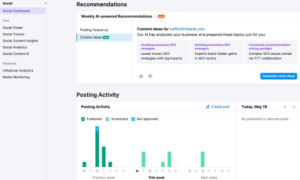If you’re beginning to learn the English language or refreshing your skills, you’re likely questioning the best approach: learning with a person or utilizing an English learning app? While both options have distinct advantages and are highly effective, there are several reasons why choosing human interaction over a digital interface captures the essence of English communication more vividly.
Language, as we know, is not just about memorizing phrases, understanding grammar, or expanding vocabulary. It is an art form buried deep within a culture’s traditions, mannerisms, and attitudes. Learning language is an immersive process that delves into the context behind words and phrases, and this depth is best explored in a human-led setting.
One of the most profound advantages of learning English with a real person, tutor or teacher, is it allows for adaptations in the teaching process, tailoring it to the unique learning style of a student. The approach can be modified as per the learner’s pace, accentuating strengths, and focusing on weaknesses. A teacher’s personalized involvement helps learners improve specific areas such as pronunciation or complex grammar structures, something pre-programmed apps might skim over briefly.
When taking on a new language such as English, pronouncing words correctly is integral to being understood. Apps do offer speech recognition software to aid learners with pronunciation. However, they generally fall short when it comes to correcting complex pronunciation errors or explaining the nuances behind stress, intonation and pitch. These intricacies of spoken English can genuinely be understood only when you have a real person to explain and correct you in real-time.
Another key benefit to learning English with a real person is receiving immediate feedback on mistakes, be it spoken or written. A human instructor can explain the context of an error, making it easier for you to understand and rectify the mistake. On the other hand, while apps featuring AI technology can identify errors, they lack the capability to provide feedback in a comprehensive, personalized manner.
Developing conversation skills is another critical facet of learning English which goes beyond merely knowing the words. Engaging in genuine conversations with a fluent English speaker allows you to improve your listening comprehension skills, sense the flow and rhythm of dialogue, and hone an ability to respond appropriately. While some apps attempt to recreate conversational scenarios, they can’t match the unpredictability and spontaneity of a real conversation.
Learning with a person also provides cultural insights that enrich the language learning experience. An instructor can introduce various cultural nuances, idioms, slang, and colloquialisms prevalent in day-to-day English conversations. This cultural dimension, predominantly absent in language learning apps, equips students with a wholesome understanding of the language.
While learning English through an app brings efficiency, accessibility, and flexibility, it’s more of a self-paced, one-dimensional approach. Conversely, learning from a human is interactive, multidimensional, and culturally immersive, which can stimulate greater language retention and comprehension.
Meanwhile, in the learning landscape today, a person doesn’t necessarily have to mean face-to-face interaction only. As the world of technology expands, virtual language classes led by real teachers offer an effective bridge between traditional classrooms and app-based learning. They combine the convenience of learning at your own pace and home with the advantages of receiving immediate feedback, personalization, and cultural context.
In conclusion, while English learning apps are a great tool, they are essentially supplementary to the rich experience of learning English from another person. The interaction and personalization provided by a human tutor certainly give it an edge over a preprogrammed application for a comprehensive language learning journey. Still, a blended approach, which combines the use of a language learning app and human guidance can genuinely offer a well-rounded and thorough English learning experience.



































